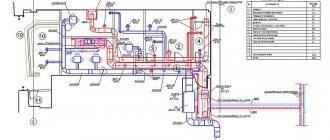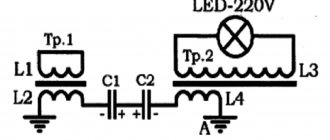Voltage drop when starting the engine is a fairly common problem, regardless of the type of power unit, as well as the make, model or class of the car. The voltage drop often manifests itself in such a way that at the moment the starter begins to rotate, the headlights sharply dim or go out, the dashboard lights lose their brightness, the radio turns off and restarts, etc.
A voltage drop can occur both when trying to start a cold internal combustion engine, and when starting an already warmed-up unit. As for the start itself, in some cases the starter actively turns for the first couple of seconds, then a certain “stutter” occurs. At this moment, the voltage drops, while the crankshaft continues to turn, but with great difficulty, but a serviceable engine usually starts.
There can be several reasons for such a malfunction, both obvious and easily removable, and hidden. In this article we will talk about why the voltage drops when starting the engine, as well as how to detect and fix the problem.
Power failure
- Damage (break) of the electrical network
- Electrical failure
- Protection triggered
- Complete absence of voltage in the network for some time (from milliseconds to several days in case of a major accident)
- Even a short-term power failure leads to a reboot of computer equipment with loss of unsaved data, or restart of an electric motor or compressor. This does not exclude their damage.
- Outages are especially dangerous in the industrial, medical and data center areas: in industry there are many non-stop processes, in medicine outages can disrupt the flow of an operation, and in the case of a data center it is downtime for a company's business.
Prevention and suppression measures:
- The most reliable way to solve problems with power outages is to use a UPS, one of the components of which is batteries. In the event of a power failure, the load is instantly powered from them (switching duration is less than half a cycle, i.e. less than 10 ms).
- It is almost impossible to solve the problem of long-term interruptions using rechargeable batteries due to the large size and high cost of such a solution. Therefore, sources of guaranteed power supply are used for critical processes. The most common of them are diesel generator sets (DGS).
Characteristic indicators
To describe the decrease in voltage amplitude, the following indicators are used:
δUп is the depth of the dips, the following formula is used for calculation: δUп = (Unom - Umin) / Unom, where Unom is the nominal value of the amplitude of the supply voltage, Umin is the value of the residual voltage;
∆t – duration, this value is defined as the difference between the moment of voltage restoration to the nominal value tк and the time parameter for fixing the initial stage of deviation tн. The formula for calculating the duration will be as follows: ∆t = tк - tн
Fп – frequency of repetitions (frequency of failures), we present the formula used to calculate this parameter: Fп= 100% * m * (δUп* ∆tп) / M, where the numerator of the fraction describes the number of deviations of a certain depth and duration that occurred during measured period. The denominator is the total number of deviations detected during the measurements.
Main indicators of voltage dip
The above indicators are used to determine the quality of electricity in a particular power supply system.
Video about the laws of electrical engineering
From the following video you can learn what electricity is and the power of electric current. Examples of practical application of the laws of electrical engineering are given.
Electricity has long been used by humans to satisfy their needs, but it is invisible, not perceived by the senses, and therefore difficult to understand. Power, current, voltage, all these characteristics of electricity were studied by famous scientists who gave them definitions and described the mutual connections between them using mathematical methods.
Power current voltage resistance
It should also be remembered that the value of electrical resistance is influenced by several factors:
The table below shows general relationships for DC and AC circuits that can be used to analyze the operation of power supply circuits.
First steps. Slab countertops
Sano published a blog entry in Furniture made from slabs, solids, and various differences, October 6, 2022, blog entry
The first attempts to make something from the brought slabs. Although there may be some attempts, the material costs money and the right to make mistakes is as much as there is money in your pocket. Train at your own expense, as they say.
Therefore, each board is carefully inspected and tried on; the proverb about measure seven times is in action.
The work itself is not tricky, creative, there are several boards and they need to be selected so that they look beautiful and there is no overspending. All sizing and trimming is done with the minimum possible removal of material, simply sawed off a little here, cut a little there with a chisel.
Voltage and load: Physics
The mains voltage is maintained constant...
Let's imagine that . In this case, the value compared to can be neglected, and the voltage across the load turns out to be the maximum possible, equal to . But at the same time, this means that the current through the load tends to zero.
In your example - the electric heater turns on - the resistance of the entire load connected to the network decreases. At the same time, the voltage across the load decreases. Now imagine that before turning on the heater, a table lamp was connected to the same outlet. Connecting the heater does not change the resistance of the lamp, but the voltage
I note that voltage as a function of load and load magnitude are widely used, but fraught with the danger of misinterpretation expressions. Very often, when they talk about increasing the electrical load, they mean an increase in current consumption or, equivalently, a decrease in load resistance. If we forget about this and by increasing the load we mean increasing the load resistance, it is easy to come to the wrong conclusions.
— Fri Nov 13, 2009 21:54:02 —
Mains voltage is maintained constant
Low voltage in the network: looking for the cause
When low voltage is detected in a house, most often one person is to blame: the energy supplier or consumer. How to decide who exactly, and how to increase? The easiest way is to take measurements using a multimeter.
The devices are available to the average user. The average price is about 1000 rubles.
For household use, the simplest multimeter, costing about 1 thousand rubles, is suitable. with its help it is easy to check whether the voltage in the network is dropping or not
Among users, the products of the companies “Master” and Gembird are especially popular.
If everything is in order with the readings, the number corresponds to 220, then the trouble lies in the high-voltage lines.
To understand whether high-voltage lines are working correctly and accurately, you will have to call specialists from the resource supply organization. They will take measurements and make a conclusion. The survey must be carried out free of charge at the request of the consumer. If you hire third-party independent experts, you will have to pay for their services out of your own pocket.
If, in order to check whether the voltage in the network is dropping, you hire independent experts, be prepared to pay for their services out of your own pocket
How to find those to blame for low voltage without a multimeter and specialists? Chat with your neighbors: have they noticed reduced (low) voltage in the network, have they tried to increase it themselves? Maybe a break has been detected? If not, then the problem is specifically in your building, if yes, then in the high-voltage line.
Ways to solve the problem
It is necessary to start by identifying the reason that led to the “subsidence” of electrical energy. Let us describe in detail the algorithm of actions:
- You can start by asking your neighbors to determine if they have a similar problem. If they are faced with a similar situation, then there is a high probability that there is an external factor (weak transformer at the substation, problems with overhead lines or power imbalance). But before writing a collective statement to Energosbyt, you should check the internal network, so regardless of the survey results, we move on to the next point.
- Disconnect the input circuit breaker and measure the voltage at the input terminals, then repeat the measurement with the connected load.
The input circuit breaker is marked with a green oval
If the voltage is within normal limits without load, but after connecting the internal network it sags, then we can state that the problem is local in nature and will have to be solved on its own. First of all, it is necessary to check the input circuit breaker, since a weak contact at its input or output can cause a voltage “sag”.
Problems with the electrical contact in the circuit breaker (CB)
As a rule, in cases with poor electrical contact, a lot of heat is generated in the problem area, which leads to deformation of the AB housing. In such cases, it is necessary to replace the protective device. Since there is a high voltage at the input of the device, such work must be performed by a specialist with the 3rd clearance group; replacing it yourself is dangerous to life.
- If everything is in order with the AV and no defects are found, you should check the compliance of the cross-section of the input cable. For this purpose, you can use the table shown in Figure 2. If necessary, replace the wire.
- In the event that checking the cable and AV does not produce results (the circuit breaker is normal and the cable corresponds to the load), the outlet should be checked. A melted body or sparking when connecting a load indicates unreliable contact, therefore, it is necessary to reconnect.
The influence and consequences of low voltage on electrical appliances
Low voltage affects household electrical appliances as follows:
- There is a significant deterioration in the starting characteristics of electric motors and compressor units. In particular, the starting current exceeds the norm, which can lead to critical overheating of the windings.
- The basic parameters and operational characteristics of electrical appliances change, for example, it takes longer to heat water with a boiler due to low power.
- The luminous flux intensity of lamps with filament decreases.
It is noteworthy that fluctuations in the network do not lead to a decrease in the brightness of energy-saving and LED sources with switching power supplies. High-quality models can work with a mains voltage of 140 Volts, but this reduces the service life of the device. A decrease in the brightness of an incandescent lamp is a characteristic sign of a voltage drop - An increase in current strength and, as a consequence, overheating of the wires of the network lines of a private house, which can lead to destruction of the insulation.
- Electronics malfunctions.
Based on the foregoing, it can be stated that those devices whose design includes an electric motor or compressor are most susceptible to the harmful effects of low (low) voltage. These include most household power tools, refrigeration units, pumping equipment, etc. The built-in protection of such equipment may not allow the devices to be turned on if the voltage fluctuates or is significantly below normal. Abnormal operating modes reduce equipment resources, which leads to a decrease in service life.
Equipment equipped with switching power supplies with a wide range of input voltages is less susceptible to influence. The “subsidence” is practically not reflected in the heating equipment; the only thing that is observed is a decrease in power compared to normal voltage. The exception is electronically controlled devices.
“Treatment” of deviation
If your voltage drops within 10–15% of the nominal value, then it makes sense to check the wiring and connection contacts. The larger the diameter of the wire, the lower its resistance and energy loss, and poorly performed twisting increases consumption.
Low voltage can be normalized using special electrical stabilizer equipment. Many models on the market allow you to choose any for a specific situation. But it should be understood that miracles do not happen, so voltage stabilization will automatically reduce the potential amount of current consumption. What to do in each specific case? It is necessary to carefully analyze the reasons for the occurrence of deviations.
The effect of input voltage “sagging” below the established norm is a fairly common problem. It is more typical for power supply in rural areas, but its manifestations can often be observed by city dwellers. It is known that low voltage in the network leads to malfunctions of household appliances, a decrease in their power and premature failure. These reasons are enough not to leave things to chance and take decisive measures to eliminate or reduce voltage surges.
Voltage drops under load - a sharp drop in voltage at home during load... - 22 answers
Why does the voltage drop when connecting a load?
In the Technology section, to the question a sharp drop in voltage at home under load... asked by the author Alexey Arnautov, the best answer is “from 220... when you turn on the iron to 130 volts.” If the iron is 1000 W, and when turned on, half the mains voltage remains on it, then the power released on the iron equal to a quarter of the nominal value, that is, 250 watts. But at the same time, the same 250 watts are released somewhere on a bad contact. With such released power, this contact should become red-hot in a few seconds and, if there is a tree nearby, etc., then cause a fire If your neighbors are fine, then this bad contact is somewhere with you. Starting from the connection to the power line (most likely you have an overhead line since the house is private) and further along the entire route: - input into the house - meter - boxes It is unlikely that it is in the socket, otherwise the lamp would not fall like that. The place of bad contact should be very hot. I would start the search with the meter and the fuses installed on it. I would turn it on for a few seconds, then be sure to turn it off and check the heating. But it’s better not to check when the load is on, otherwise it may blaze under your hand. A friend of mine is missing a finger on his hand; it burned off when he was repairing a panel at home; moreover, he himself is an electrical engineer, and worked as a power engineer for a small enterprise. That is, it seems like he should have figured out what was what.
Reply from 2 replies
Hello! Here is a selection of topics with answers to your question: a sharp drop in voltage at home under load...
Answer from Dmitry Look for where you have a bad contact (poor quality machine, oxidized contact, bad twisting, very thin wire, etc.). This is no joke. The power that does not reach your iron is released in the form of heat somewhere in your wiring, heating this place to a high temperature, and then a fire is just around the corner.
Answer from Gennady Sergeev The resistance of the supply circuits is high, also the current loads exceed the calculated ones, the state of the melting phase, etc. Do the calculation after installation...
Answer from Art The wiring means weak, or the phase is weak. We need to check how the same phase behaves in other neighbors
Answer from Alexander NabokikhCheck at the KTP (transformer substation) the circuit breaker from which your house is powered. It looks like there is a bad contact in the machine (burnt). Neighbors can feed from the same machine, but from a different phase, so they have everything zero. In short, look for bad contact from the tr-ra to the house. And don't delay this matter. If everything is fine with the neighbors AT THE SAME PHASE, then there is a weak connection in the house. Sooner or later he will definitely tan.
Reply from 2 replies
Hello! Here are more topics with the answers you need:
Wires, non-original connections, low-quality devices
The issue of poor-quality connection of on-board network consumers is worth considering in more detail. If you installed the radio in your car yourself, taking power from the wrong place, the problem of battery drain and load on all vital organs will be very relevant. It is better to exclude handicraft interference in the electrical power system altogether. If something needs to be delivered, contact the station and do it efficiently. The following problems of increased load on the system are possible:
- one of the consumers draws all the voltage, reducing it in the network to incredible levels, this could be a subwoofer or powerful speakers that are not provided in the car;
- you additionally installed powerful equipment and connected it through the cigarette lighter and other elements of the electrical network that are not intended for this;
- low-quality wires were used in the connection, also the problem with the wires may be present in the car from the factory, this can only be eliminated by replacing the wiring with a more expensive one;
- a failure in one of the important elements of the electrical network, the presence of increased electricity consumption and a significant drain on the machine’s resources, which negatively affects the network;
- problems with incorrectly installed relays and fuses that interfere with the normal functioning of the car’s organs, but this can only be determined after professional diagnostics.
In fact, all such details are examined only at a professional station, otherwise it will be impossible to get an answer to the question. If you are familiar with electricity, then with the help of a tester you can determine for yourself exactly where the drawdown is occurring. After this, through trial and error, you can find the element that is responsible for the drawdown. But keep in mind that experiments in this area may not end well for your car.
Frequency variations
- The power frequency deviates from the standard 50Hz up or down.
- The greatest impact is on electric motors: changing the rotor speed. IT equipment is virtually unaffected.
- Reduced life of sensitive electrical equipment
Prevention and suppression measures:
- Diagnosis of relevant power supplies
- Using a UPS
Concepts and formulas
At each resistance r, when current I passes, a voltage U=I∙r arises, which is usually called the voltage drop across this resistance.
If there is only one resistance r in an electrical circuit, the entire source voltage Uist drops across this resistance.
If there are two resistances r1 and r2 in the circuit, connected in series, then the sum of the voltages across the resistances U1=I∙r1 and U2=I∙r2, i.e., voltage drops, is equal to the source voltage: Uist=U1+U2.
The power supply voltage is equal to the sum of the voltage drops in the circuit (Kirchhoff's 2nd law).
1. What voltage drop occurs on a lamp filament with a resistance of r=15 Ohm when a current I=0.3 A passes (Fig. 1)?
The voltage drop is calculated according to Ohm's law: U=I∙r=0.3∙15=4.5 V.
The voltage between points 1 and 2 of the light bulb (see diagram) is 4.5 V. The light bulb glows normally if the rated current passes through it or if there is a rated voltage between points 1 and 2 (the rated current and voltage are indicated on the light bulb).
2. Two identical light bulbs with a voltage of 2.5 V and a current of 0.3 A are connected in series and connected to a pocket battery with a voltage of 4.5 V. What voltage drop is created across the terminals of the individual light bulbs (Fig. 2)?
Identical light bulbs have equal resistance r. When connected in series, the same current I passes through them. It follows that they will have the same voltage drops, the sum of these voltages should be equal to the source voltage U = 4.5 V. Each light bulb has a voltage of 4.5:2 =2.25 V.
Voltage drops under load - a sharp drop in voltage at home during load... - 22 answers
Why does the voltage drop when connecting a load?
In the Technology section, the question is a sharp drop in voltage at home under load. The best answer given by the author Alexey Arnautov is “with 220. when the iron is turned on, up to 130 volts.”If the iron is 1000 watts, and when turned on, half the mains voltage remains on it, then the power released by the iron is equal to a quarter of the rated power, that is, 250 watts. But at the same time, the same 250 watts are released somewhere on a bad contact .With such released power, this contact should become red-hot in a few seconds and, if there is a tree, etc. nearby, then cause a fire. If your neighbors are fine, then this bad contact is somewhere with you. Starting from the connection to the power line (most likely you have an overhead line since the house is private) and further along the entire route: - input into the house - meter - boxes It is unlikely that it is in the socket, otherwise the lamp would not fall like that. The place of bad contact should be very hot. I would start the search with the meter and the fuses installed on it. I would turn it on for a few seconds, then be sure to turn it off and check the heating. But it’s better not to check when the load is on, otherwise it may blaze under your hand. A friend of mine is missing a finger on his hand; it burned off when he was repairing a panel at home; moreover, he himself is an electrical engineer, and worked as a power engineer for a small enterprise. That is, it seems like he should have figured out what was what.
Reply from 2 replies
Hello! Here is a selection of topics with answers to your question: a sharp drop in voltage at home under load.
Answer from Dmitry Look for where you have a bad contact (poor quality machine, oxidized contact, bad twisting, very thin wire, etc.). This is no joke. The power that does not reach your iron is released in the form of heat somewhere in your wiring, heating this place to a high temperature, and then a fire is just around the corner.
Answer from Gennady Sergeev The resistance of the supply circuits is high, also the current loads exceed the calculated ones, the state of the melting phase, etc. Do the calculations after installation.
Answer from Art The wiring means weak, or the phase is weak. We need to check how the same phase behaves in other neighbors
Answer from Alexander NabokikhCheck at the KTP (transformer substation) the circuit breaker from which your house is powered. It looks like there is a bad contact in the machine (burnt). Neighbors can feed from the same machine, but from a different phase, so they have everything zero. In short, look for bad contact from the tr-ra to the house. And don't delay this matter. If everything is fine with the neighbors AT THE SAME PHASE, then there is a weak connection in the house. Sooner or later he will definitely tan.
Reply from 2 replies
Hello! Here are more topics with the answers you need:
Many people in the fields are familiar with the problem of a voltage drop when both fans are turned on. For me it dropped as much as 11.5 (when driving in traffic jams, with air conditioning). The car began to feel unpleasantly dull. I started looking for a solution to the problem. The problem lies in the voltage regulator, which regulates the voltage depending on the temperature of the generator (in traffic jams, in a hot engine compartment, it began to greatly underestimate the voltage).
1) Replace the gene immediately with 135A and forget about it for a long time + there will be enough power for everything - the price of the issue
2) Replacing the diode bridge with a decimal bridge with two additional diodes (BV03-105-01) + installing a three-level voltage regulator (or a regular decimal regulator) + price - not a fact that it will help.
I decided to take a risk and chose the second option + a three-level regulator. All the same, there is no chandelier, no cool music. The regular genes should be enough.
There are not many photos, there was no time for that. In general, everything is simple (don’t forget to remove the ground terminal from the battery): 1) Loosen the belt 2) Remove the gene 3) Remove the original diode bridge in the regulator (don’t lose it and remember the position of the insulating washers!) 4) Install a new bridge and regulator 5) Put the generator in place and we tighten the belt6) We attach the remote relay to ground (good contact is important. How and where you secured it can be seen in the photo).
The voltage in the house dropped to 160 volts
Electrical voltage of 160–180 volts is a very common problem that is familiar to many owners of private houses and cottages. Such a low voltage is not enough even for the normal functioning of lighting devices.
It is very easy to determine who is causing the problem. If insufficient voltage is supplied to the power line, then the fault falls on the service provider, and if the problem is noted only on the branch to a private house, then only the consumer is responsible for this.
You can check what exactly is the cause of insufficient voltage yourself by contacting the neighbors of nearby houses. If a similar problem does not bother them, then it is absolutely clear that the voltage drop occurs precisely on the branch from the power line to the house.
The main sign of a faulty power input is a sharp drop in voltage when devices with high power consumption are simultaneously connected to the network. Everyone is familiar with the situation when devices turn off or the circuit breakers on the control panel are knocked out.
Reasons for decreasing input voltage and its elimination
Firstly, the voltage may drop due to the cross-section (thickness) of the wires being too small. Thin wires are not able to withstand heavy loads.
Secondly, subsidence may occur due to poor contact on the branch. Such contact forms excessive resistance in the network, due to which the final voltage decreases.
The danger of such malfunctions lies in excessive heating of the wires or the place where the bad contact is located, which is formed due to loss of voltage in the network. A hot faulty contact can subsequently lead to a complete blackout of the house or a fire.
Ideally, power lines and inputs should be connected using clamps, which are safer and more reliable than all other connection options. However, often even factory clamps can become unusable and produce sparks and heat, which are observed at maximum load on the wiring. Of course, if a malfunction is detected, the clamp must be urgently replaced.
Sometimes a contact fault is detected on the device that connects the house panel and the branch wires. In this case, the voltage loss can be eliminated only by replacing this device.
Low voltage on power lines
Voltage sags on power lines for which the electricity supplier is responsible can occur in the following cases:
- Overvoltage at the substation.
- Insufficient cross-section of wires on the line.
Uneven distribution of phase loads at the substation.
Today, when almost all old substations have been replaced with new ones, it is almost impossible for an overload to occur at them. This is due to the installation of effective relay protection on modern models. Outdated substations remained operational only in the most remote villages and populated areas. Eliminating subsidence due to overloads is only possible by replacing the substation itself.
A voltage drop due to uneven phase loads at a substation is an unstable phenomenon, which will be very difficult to prove to residents of the private sector.
Insufficient cross-section of power line wires most often causes low voltage. The fact is that for a long time such wires were chosen for equipment because of their low cost.
Several decades ago, this cross-section of wires was quite sufficient for normal power supply to the private sector. Now that almost everything runs on electricity, the wires can no longer withstand such loads and require replacement. This problem is especially evident during the day, when all residents use electrical appliances at the same time, and at night the situation stabilizes.
Of course, problems on the power line should be dealt with directly by the utility provider, but, unfortunately, many private sector residents live with insufficient voltage for years, because the cost of replacing the substation or wires is very expensive. The only solution to such problems can only be a collective letter, which should include not only a request to resolve the issue, but also a reminder about the quality of the energy supply services provided.
In tandem with this article, it is useful to familiarize yourself with the video supplement:
Distribution board. Secrets of assembling and selecting machines. Electrical and electrical installation during repairs
The generator and its environment are sources of electricity sags
Network sags are often associated with the generator and its operation. Theoretically, after turning on the power unit, the battery goes to rest and is even recharged from the generator. All tasks for providing power supply are taken over by this small device. There are a certain number of problems that should always be taken into account when you have such problems. The issue of a non-working generator can be resolved by troubleshooting the following problems:
- alternator brushes have to be changed quite often on domestic cars (the element is popularly called a “chocolate bar”), but on high-quality cars they rarely fail;
- Often the cause of problems is the generator relay, which does not produce the required voltage due to internal failures; it can simply be replaced for normal operation;
- problems also arise with the diode bridge; due to the breakdown of one of the diodes, the voltage in the network may fluctuate or be constantly at a very low level, this should be eliminated;
- a problem with malfunctions of the physical part of the generator is less often the cause, but it is also worth checking; it is quite possible that we are talking about the necessary replacement of the shaft and bearings;
- mass and quality of wires to the main modules - an extremely tricky problem is the lack of a good mass; just tug and clean the contacts to solve the problem.
Low voltage in the network: looking for the cause
When low voltage is detected in a house, most often one person is to blame: the energy supplier or consumer. How to decide who exactly, and how to increase? The easiest way is to take measurements using a multimeter.
The devices are available to the average user. The average price is about 1000 rubles.
For household use, the simplest multimeter, costing about 1 thousand rubles, is suitable. with its help it is easy to check whether the voltage in the network is dropping or not
The products, Gembird, are especially popular among users.
The multimeter will show how many volts the home network produces. If everything is in order with the readings, the number corresponds to 220, then the trouble lies in the high-voltage lines.
To understand whether high-voltage lines are working correctly and accurately, you will have to call specialists from the resource supply organization. They will take measurements and make a conclusion. The survey must be carried out free of charge at the request of the consumer. If you hire third-party independent experts, you will have to pay for their services out of your own pocket.
If, in order to check whether the voltage in the network is dropping, you hire independent experts, be prepared to pay for their services out of your own pocket
How to find those to blame for low voltage without a multimeter and specialists? Chat with your neighbors: have they noticed reduced (low) voltage in the network, have they tried to increase it themselves? Maybe a break has been detected? If not, then the problem is specifically in your building, if yes, then in the high-voltage line.
Let's sum it up
It is better to always monitor the behavior of your car. If there are problems with the battery or generator, you will have to immediately begin restoring the vehicle. Otherwise, you will soon be faced with the fact that the car simply will not be able to drive normally and will constantly provide you with unpleasant moments. Using completely understandable and long-existing methods, you can get the necessary range of services at a service station without much difficulty. But it is not recommended to fix any electrical problems yourself.
However, you can yourself, using a tester and other devices, measure all the necessary data on the on-board network, find the place of the drawdown and try to replace the element that is stealing voltage. The only problem is that to do this you need to have at least some skills in working with electricity. Also, it all depends on the level of your car, its degree of protection against artisanal interference. If a VAZ can be repaired using simple instructions, then it is better not to get into modern BMWs without an auto electrician’s diploma and constant practice. Have you ever had problems with the on-board electrical system?











